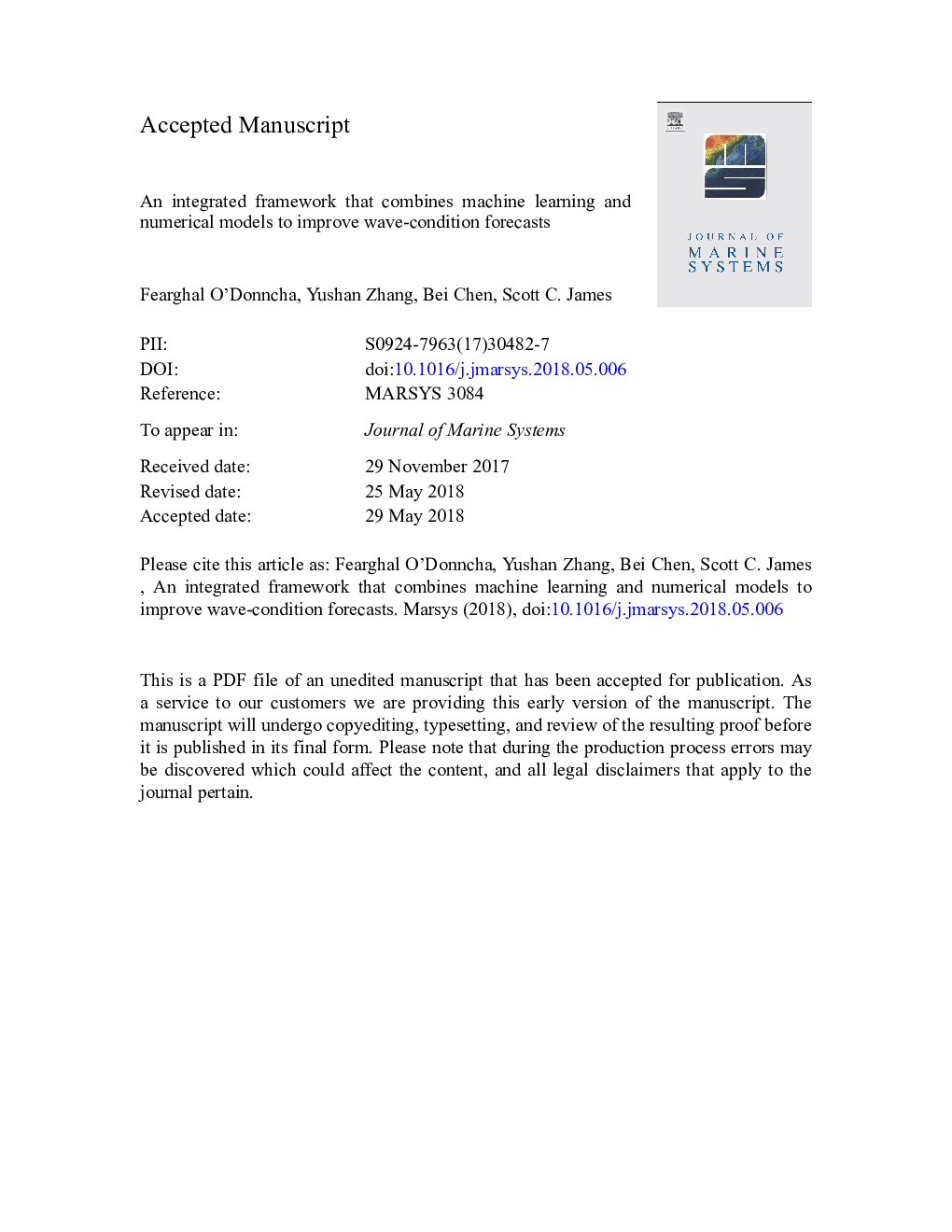| Article ID | Journal | Published Year | Pages | File Type |
|---|---|---|---|---|
| 8885908 | Journal of Marine Systems | 2018 | 31 Pages |
Abstract
This study investigates near-shore circulation and wave characteristics applied to a case-study site in Monterey Bay, California. We integrate physics-based models to resolve wave conditions together with a machine-learning algorithm that combines forecasts from multiple, independent models into a single “best-estimate” prediction of the true state. The Simulating WAves Nearshore (SWAN) physics-based model is used to compute wind-augmented waves. Ensembles are developed based on multiple simulations perturbing data input to the model. A learning-aggregation technique uses historical observations and model forecasts to calculate a weight for each ensemble member. We compare the weighted ensemble predictions with measured data to evaluate performance against present state-of-the-art. Finally, we discuss how this framework that integrates data-driven and physics-based approaches can outperform either technique in isolation.
Related Topics
Physical Sciences and Engineering
Earth and Planetary Sciences
Oceanography
Authors
Fearghal O'Donncha, Yushan Zhang, Bei Chen, Scott C. James,
